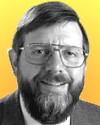
Born 5 Nov 1948.
American physicist whose experiments using laser light to cool and trap atoms earned him a share of the Nobel Prize for Physics in 1997 (with Steven Chu and Claude Cohen-Tannoudji). They developed methods to use laser light to cool gases to the microkelvin temperature range near absolute zero, and keeping the chilled atoms floating or captured in different kinds of “atom traps”. The laser light functions as a thick liquid, dubbed optical molasses, in which the atoms are slowed down. Individual atoms can be studied there with very great accuracy and their inner structure can be determined. As more and more atoms are captured in the same volume a thin gas forms, and its properties can be studied in detail.
American physicist whose experiments using laser light to cool and trap atoms earned him a share of the Nobel Prize for Physics in 1997 (with Steven Chu and Claude Cohen-Tannoudji). They developed methods to use laser light to cool gases to the microkelvin temperature range near absolute zero, and keeping the chilled atoms floating or captured in different kinds of “atom traps”. The laser light functions as a thick liquid, dubbed optical molasses, in which the atoms are slowed down. Individual atoms can be studied there with very great accuracy and their inner structure can be determined. As more and more atoms are captured in the same volume a thin gas forms, and its properties can be studied in detail.
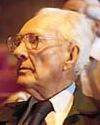
Born 5 Nov 1906; died 30 Aug 2004 at age 97.
Fred Lawrence Whipple was an American astronomer who proposed the “dirty snowball” model for comet nuclei. In the 1930s, using a new, two-station method of photography, he determined meteor trajectories and found that nearly all visible meteors are made up of fragile material from comets, and that none come from beyond the solar system. Whipple suggested (1950) that comets have icy cores inside thin insulating layers of dirt, and that jets of material ejected as a result of solar heating were the cause of orbital changes. This model was confirmed in 1986 when spacecraft flew past comet Halley. Whipple's work on tracking artificial satellites led to improved knowledge of the shape of the earth and greatly improved positions on earth.
Fred Lawrence Whipple was an American astronomer who proposed the “dirty snowball” model for comet nuclei. In the 1930s, using a new, two-station method of photography, he determined meteor trajectories and found that nearly all visible meteors are made up of fragile material from comets, and that none come from beyond the solar system. Whipple suggested (1950) that comets have icy cores inside thin insulating layers of dirt, and that jets of material ejected as a result of solar heating were the cause of orbital changes. This model was confirmed in 1986 when spacecraft flew past comet Halley. Whipple's work on tracking artificial satellites led to improved knowledge of the shape of the earth and greatly improved positions on earth.
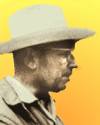
Born 5 Nov 1902; died 12 Apr 1963 at age 60.
Swiss anthropologist noted for his pioneering contributions to South American ethnohistory and the examination of African culture in Haiti. While director of the ethnological institute at the University of Tucumán, Argentina, (1928-34) he wrote two classic works on the ethnohistory of the extinct Tupinambá Indians of Brazil. He made an expedition to Easter Island (1934-35), after which he argued that Easter Island's indigenous population is Polynesian, both culturally and physically, and that the island's well-known monolithic sculptures are native creations rather than Asian or American Indian ones. After travelling the Amazon (1947-48) he studied the Haiti island culture (1949-50). He viewed voodoo as a structured, complex religious system with African origins.
Swiss anthropologist noted for his pioneering contributions to South American ethnohistory and the examination of African culture in Haiti. While director of the ethnological institute at the University of Tucumán, Argentina, (1928-34) he wrote two classic works on the ethnohistory of the extinct Tupinambá Indians of Brazil. He made an expedition to Easter Island (1934-35), after which he argued that Easter Island's indigenous population is Polynesian, both culturally and physically, and that the island's well-known monolithic sculptures are native creations rather than Asian or American Indian ones. After travelling the Amazon (1947-48) he studied the Haiti island culture (1949-50). He viewed voodoo as a structured, complex religious system with African origins.
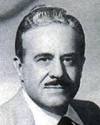
Born 5 Nov 1893; died 14 Jul 1986 at age 92. quotes
French-born American inventor and design engineer, known as the “Father of Streamlining.” Famous examples of his designs include the Studebaker1947 Starlight Coupe, the 1953 Starliner Coupe and the 1961 Avanti - designs that generated a public interest and acceptance far out of proportion to the company's relative size in the industry; the 1947 line of Hallicrafter radio receivers that conveyed a crisp precision far ahead of their time; the 1929 Gestetner duplicating machine, the 1934 Sears Coldspot Refrigerator and the S-1 Steam locomotive for the Pennsylvania Railroad - all landmark designs influential in establishing higher design standards in their respective design areas. He also designed such smaller items as toothbrushes, razors, furniture and the Coca Cola Bottle.
French-born American inventor and design engineer, known as the “Father of Streamlining.” Famous examples of his designs include the Studebaker1947 Starlight Coupe, the 1953 Starliner Coupe and the 1961 Avanti - designs that generated a public interest and acceptance far out of proportion to the company's relative size in the industry; the 1947 line of Hallicrafter radio receivers that conveyed a crisp precision far ahead of their time; the 1929 Gestetner duplicating machine, the 1934 Sears Coldspot Refrigerator and the S-1 Steam locomotive for the Pennsylvania Railroad - all landmark designs influential in establishing higher design standards in their respective design areas. He also designed such smaller items as toothbrushes, razors, furniture and the Coca Cola Bottle.
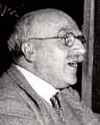
Born 5 Nov 1892; died 1 Dec 1964 at age 72. quotes
John Burdon Sanderson Haldane was an English geneticist and biometrician who opened new paths of research in population genetics and evolution. He began studying science at the age of eight, as assistant to his father (the noted physiologist John Scott Haldane). J.B.S. Haldane also worked in biochemistry, and on the effects of diving on human physiology. A Marxist from the 1930s, Haldane was well known for his outspoken Marxist views.He resigned from the Communist Party c. 1950 on the issue of Trofim Lysenko's claims to have manipulated the genetic structure of plants and “Stalin's interference with science.” He became known to a large public as a witty popularizer of science with such works as Daedalus (1924), and Possible Worlds (1927).
John Burdon Sanderson Haldane was an English geneticist and biometrician who opened new paths of research in population genetics and evolution. He began studying science at the age of eight, as assistant to his father (the noted physiologist John Scott Haldane). J.B.S. Haldane also worked in biochemistry, and on the effects of diving on human physiology. A Marxist from the 1930s, Haldane was well known for his outspoken Marxist views.He resigned from the Communist Party c. 1950 on the issue of Trofim Lysenko's claims to have manipulated the genetic structure of plants and “Stalin's interference with science.” He became known to a large public as a witty popularizer of science with such works as Daedalus (1924), and Possible Worlds (1927).
J. B. S.: The Life and Work of J.B.S. Haldane, by Ronald William Clark. - book suggestion.
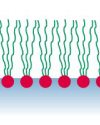
Born 5 Nov 1891; died 1973.
English physical chemist who continued Langmuir's work of 1917 on surface films. During WW I, he served as a chemist in the Royal Naval Airship Service. Adam's work on unimolecular films on water (1920-39) showed that at the water-air interface there existed a two-dimensional state of matter and that this could exist in various phases. (Compare how in three dimensions there exist various phases: solid, liquid and gaseous states). This led to improved understanding of the shapes, sizes and fields of force surrounding organic molecules. He also studied surface active agents and detergents. Among other papers, Adam wrote The Physics and Chemistry of Surfaces.[Image: At an air-water interface lipids will form monolayers with the polar head groups directed towards the water the fatty acid chains exposed to the air.]
English physical chemist who continued Langmuir's work of 1917 on surface films. During WW I, he served as a chemist in the Royal Naval Airship Service. Adam's work on unimolecular films on water (1920-39) showed that at the water-air interface there existed a two-dimensional state of matter and that this could exist in various phases. (Compare how in three dimensions there exist various phases: solid, liquid and gaseous states). This led to improved understanding of the shapes, sizes and fields of force surrounding organic molecules. He also studied surface active agents and detergents. Among other papers, Adam wrote The Physics and Chemistry of Surfaces.[Image: At an air-water interface lipids will form monolayers with the polar head groups directed towards the water the fatty acid chains exposed to the air.]
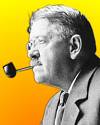
Born 5 Nov 1867; died 6 Jun 1942 at age 74.
American archaeologist who directed many excavations in Egypt and Nubia (Nilotic Sudan) and discovered the subterranean burial chamber of Queen Hetepheres, mother of King Cheops (2606-2583 BC), builder of the Great Pyramid at Giza, the painted tomb chapel of Queen Meresankh III, granddaughter of King Cheops; the excavation of the third Giza pyramid and funerary temples of King Mycerinus (2548–2530 B.C.). After directing the Archaeological Survey of Nubia (1907-09) intended to record sites prior to construction of the original Aswan High Dam, he explored the cultures of Nubia (modern Sudan) to the south of Egypt. In his final years despite near total blindness, he continued working. He was buried in the Christian cemetery in Cairo.
American archaeologist who directed many excavations in Egypt and Nubia (Nilotic Sudan) and discovered the subterranean burial chamber of Queen Hetepheres, mother of King Cheops (2606-2583 BC), builder of the Great Pyramid at Giza, the painted tomb chapel of Queen Meresankh III, granddaughter of King Cheops; the excavation of the third Giza pyramid and funerary temples of King Mycerinus (2548–2530 B.C.). After directing the Archaeological Survey of Nubia (1907-09) intended to record sites prior to construction of the original Aswan High Dam, he explored the cultures of Nubia (modern Sudan) to the south of Egypt. In his final years despite near total blindness, he continued working. He was buried in the Christian cemetery in Cairo.
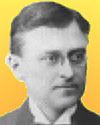
Born 5 Nov 1863; died 20 Mar 1928 at age 64.
James Ward Packard was an American engineer and inventor who founded Packard Automobile Co. A few years after graduation, as foreman at Sawyer-Mann Electric Co., N.Y., manufacturers of the Sawyer-Mann incandescent electric lamp, he acquired several patents. These included a new form of incandescent lamp, a lamp socket, and improvements in vacuum pumps for exhausting the air from incandescent lamp bulbs. In 1889, he and his brother started an electrical business, the Packard Electric Company. His next patents included manufacturing electrical transformers, fuse boxes, measuring instruments, and cables. Later, he designed and built his first automobile, which he road tested on 6 Nov 1899. He then formed the Packard Motor Co. A Packard Model F left San Francisco on 21 Jun 1902 on a transcontinental journey ending 21 Aug 1903 in NYC.«
James Ward Packard was an American engineer and inventor who founded Packard Automobile Co. A few years after graduation, as foreman at Sawyer-Mann Electric Co., N.Y., manufacturers of the Sawyer-Mann incandescent electric lamp, he acquired several patents. These included a new form of incandescent lamp, a lamp socket, and improvements in vacuum pumps for exhausting the air from incandescent lamp bulbs. In 1889, he and his brother started an electrical business, the Packard Electric Company. His next patents included manufacturing electrical transformers, fuse boxes, measuring instruments, and cables. Later, he designed and built his first automobile, which he road tested on 6 Nov 1899. He then formed the Packard Motor Co. A Packard Model F left San Francisco on 21 Jun 1902 on a transcontinental journey ending 21 Aug 1903 in NYC.«
Packard Motor Car Company, by Evan P. Idle. - book suggestion.
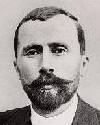
Born 5 Nov 1855; died 2 Jan 1913 at age 57.
French meteorologist who discovered the stratosphere (1902). He established own observatory at Trappes (1896) and pioneered in the use of unmanned, instrumented balloons to investigate atmosphere. Teisserenc de Bort found that above an altitude of 7 miles (11 km) temperature ceased to fall and sometimes increased slightly. He named this upper part of the atmosphere the stratosphere, because he thought that the different gases would lie in distinct strata as, without temperature differentials, there would be no mechanism to disturb them. The lower part of the atmosphere he named the troposphere (Greek: "sphere of change") as here, with abundant temperature differentials, constant change and mingling of atmospheric gases occurred.
French meteorologist who discovered the stratosphere (1902). He established own observatory at Trappes (1896) and pioneered in the use of unmanned, instrumented balloons to investigate atmosphere. Teisserenc de Bort found that above an altitude of 7 miles (11 km) temperature ceased to fall and sometimes increased slightly. He named this upper part of the atmosphere the stratosphere, because he thought that the different gases would lie in distinct strata as, without temperature differentials, there would be no mechanism to disturb them. The lower part of the atmosphere he named the troposphere (Greek: "sphere of change") as here, with abundant temperature differentials, constant change and mingling of atmospheric gases occurred.
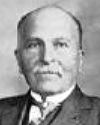
Born 5 Nov 1854; died 14 Aug 1941 at age 86. quotes
Organic chemist who shared the Nobel Prize for Chemistry in 1912 with Victor Grignard. Sabatier researched in catalytic organic synthesis, and discovered the use of finely divided nickel as a catalyst in hydrogenation (the addition of hydrogen to molecules of carbon compounds). The margarine, oil hydrogenation, and synthetic methanol industries grew out of this work. He found that increasing the surface area of catalysts such as copper and nickel by finely dividing them greatly increases their effectiveness. Sabatier did wide-ranging research of the use of catalysts in organic chemistry syntheses, revealing metals other than nickel, though less effective, can also behave as catalysts.
Organic chemist who shared the Nobel Prize for Chemistry in 1912 with Victor Grignard. Sabatier researched in catalytic organic synthesis, and discovered the use of finely divided nickel as a catalyst in hydrogenation (the addition of hydrogen to molecules of carbon compounds). The margarine, oil hydrogenation, and synthetic methanol industries grew out of this work. He found that increasing the surface area of catalysts such as copper and nickel by finely dividing them greatly increases their effectiveness. Sabatier did wide-ranging research of the use of catalysts in organic chemistry syntheses, revealing metals other than nickel, though less effective, can also behave as catalysts.
Born 5 Nov 1787; died 5 Jun 1865 at age 77. quotes
Scottish naval surgeon and naturalist who made accurate surveys of more of the Canadian Arctic coast than any other explorer, in service with the Royal navy (1807-55). During this time he was surgeon and naturalist to Sir John Franklin's polar expeditions (1819-22, 1825-27). On the second expeditions, he separated from Franklin to explore the coast to the Coppermine River and Great Slave Lake (1826). He conducted a search expedition (1848-49) for Franklin's lost third Arctic expedition that had started in 1845, but was unable to find any trace of Franklin's ships. He wrote Fauna Boreali-Americana (1829-37) which became a standard work on Arctic biology. He also wrote on ichthyology and polar exploration.
Scottish naval surgeon and naturalist who made accurate surveys of more of the Canadian Arctic coast than any other explorer, in service with the Royal navy (1807-55). During this time he was surgeon and naturalist to Sir John Franklin's polar expeditions (1819-22, 1825-27). On the second expeditions, he separated from Franklin to explore the coast to the Coppermine River and Great Slave Lake (1826). He conducted a search expedition (1848-49) for Franklin's lost third Arctic expedition that had started in 1845, but was unable to find any trace of Franklin's ships. He wrote Fauna Boreali-Americana (1829-37) which became a standard work on Arctic biology. He also wrote on ichthyology and polar exploration.
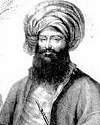
1820
Born 5 Nov 1778; died 3 Dec 1823 at age 45.
Italian circus performer and archaeologist who went to England in 1803, earning a living as a circus strong man. He first travelled to Egypt in 1815 to sell hydraulic engines for use in irrigation. By 1817, he turned to excavating Egyptian archaeological sites for their treasures, though with scant regard for incidental damage to less desirable items. He obtained the colossal sculpture of the head of Ramses II for the British Museum. In the Valley of the Tombs of Kings, he discovered the tomb of Seti I and removed the aragonite sarcophagus for the Sir John Soane's Museum, London. Belzoni cleared the entrance to the great temple of Ramses II at Abu Simbel, was first to penetrate the pyramid of Khafre at Giza, and identified ruins of the city of Berenice on the Red Sea.
Italian circus performer and archaeologist who went to England in 1803, earning a living as a circus strong man. He first travelled to Egypt in 1815 to sell hydraulic engines for use in irrigation. By 1817, he turned to excavating Egyptian archaeological sites for their treasures, though with scant regard for incidental damage to less desirable items. He obtained the colossal sculpture of the head of Ramses II for the British Museum. In the Valley of the Tombs of Kings, he discovered the tomb of Seti I and removed the aragonite sarcophagus for the Sir John Soane's Museum, London. Belzoni cleared the entrance to the great temple of Ramses II at Abu Simbel, was first to penetrate the pyramid of Khafre at Giza, and identified ruins of the city of Berenice on the Red Sea.
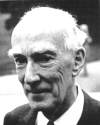
1970
Died 5 Nov 1992 at age 92 (born 28 Apr 1900).
Jan Hendrik Oort was a Dutch physicist and astronomer, one of the most important figures in 20th-century efforts to understand the nature of the Milky Way Galaxy, who measured the rotation of the earth's galaxy and hypothesized an "Oort Cloud." In 1927 Oort analyzed motions of distant stars, found evidence for differential rotation and founded the mathematical theory of galactic structure. After World War II, he led the Dutch group which used the 21-cm line to map hydrogen gas in the Galaxy. They found the large-scale spiral structure, the galactic center, and gas cloud motions. In 1950 Oort proposed the now generally accepted model for the origin of comets. He continued researching galaxies until shortly before his death at 92.
Jan Hendrik Oort was a Dutch physicist and astronomer, one of the most important figures in 20th-century efforts to understand the nature of the Milky Way Galaxy, who measured the rotation of the earth's galaxy and hypothesized an "Oort Cloud." In 1927 Oort analyzed motions of distant stars, found evidence for differential rotation and founded the mathematical theory of galactic structure. After World War II, he led the Dutch group which used the 21-cm line to map hydrogen gas in the Galaxy. They found the large-scale spiral structure, the galactic center, and gas cloud motions. In 1950 Oort proposed the now generally accepted model for the origin of comets. He continued researching galaxies until shortly before his death at 92.
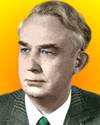
Died 5 Nov 1976 at age 63 (born 20 Apr 1913).
German zoologist who proposed cladistics (Greek=branch) for the hierarchical classification of species, based on phylogeny - the evolutionary history - of the ancestors. He wished to deal with deficiencies in the system originated by Linnaeus. Hennig published a new system in his book, Theorie der phylogenetischen Systematik in 1950. Cladistics regards all new species to have evolved by descent with modification. After an evolutionary branching, some shared derived characteristics are retained. Thus the evolutionary history of current organisms can be traced back, connecting through shared ancestors to lineages of other organisms. For example, the even-toed foot of the deer, camels, cattle, pigs and hippopotamus is a homologous similarity indicating a common ancestor.«
German zoologist who proposed cladistics (Greek=branch) for the hierarchical classification of species, based on phylogeny - the evolutionary history - of the ancestors. He wished to deal with deficiencies in the system originated by Linnaeus. Hennig published a new system in his book, Theorie der phylogenetischen Systematik in 1950. Cladistics regards all new species to have evolved by descent with modification. After an evolutionary branching, some shared derived characteristics are retained. Thus the evolutionary history of current organisms can be traced back, connecting through shared ancestors to lineages of other organisms. For example, the even-toed foot of the deer, camels, cattle, pigs and hippopotamus is a homologous similarity indicating a common ancestor.«
Phylogenetic Systematics, by Willi Hennig (Trans. Dwight Davis, Rainer Zangerl). - book suggestion.
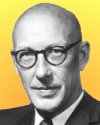
Died 5 Nov 1975 at age 65 (born 14 Dec 1909).
American biochemist whose research helped create the field of molecular genetics. He helped demonstrate that genes determine the structure of particular enzymes or otherwise act by regulating specific chemical processes in living things. With George Beadle and Joshua Lederberg, he won the 1958 Nobel Prize for Physiology or Medicine. During WW II, his work was of use in maximizing penicillin production, and it has also made possible the introduction of new methods for assaying vitamins and amino acids in foods and tissues. In 1940, in collaboration with George Beadle, he had made his studies on the pink bread mold, Neurospora crassa. They irradiated spores of bread moulds, allowed them to germinate, and discovered three mutant strains that had lost the ability to synthesize specific vitamins, implying that in each case the necessary enzyme was missing or nonfunctional. The mutants differed from normal by only a single gene, which showed that specific genes determine the structure of particular enzymes or otherwise act by regulating specific chemical processes in living things. In 1945, he moved to Yale and he extended his techniques to yeast and bacteria. Tatum and Lederberg discovered genetic recombination in certain bacteria (1946).
American biochemist whose research helped create the field of molecular genetics. He helped demonstrate that genes determine the structure of particular enzymes or otherwise act by regulating specific chemical processes in living things. With George Beadle and Joshua Lederberg, he won the 1958 Nobel Prize for Physiology or Medicine. During WW II, his work was of use in maximizing penicillin production, and it has also made possible the introduction of new methods for assaying vitamins and amino acids in foods and tissues. In 1940, in collaboration with George Beadle, he had made his studies on the pink bread mold, Neurospora crassa. They irradiated spores of bread moulds, allowed them to germinate, and discovered three mutant strains that had lost the ability to synthesize specific vitamins, implying that in each case the necessary enzyme was missing or nonfunctional. The mutants differed from normal by only a single gene, which showed that specific genes determine the structure of particular enzymes or otherwise act by regulating specific chemical processes in living things. In 1945, he moved to Yale and he extended his techniques to yeast and bacteria. Tatum and Lederberg discovered genetic recombination in certain bacteria (1946).
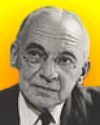
Died 5 Nov 1973 at age 78 (born 28 Dec 1894). quotes
U.S. paleontologist who studied the evolution of early vertebrates in biological terms of comparative anatomy and embryology. He researched muscle and limb evolution, the development and evolutionary history of cartilage and bone, and the structure and function of the nervous system. Further, he traced the basic structural and functional changes that took place during the evolution of fishes to primitive terrestrial vertebrates and from these to modern vertebrates. He linked the form and function of animals to their environment. Romer was one of the first vertebrate palaeontologists to defend the idea of continental drift, having found striking similarities between Permian reptiles in western Texas and in Czechoslovakia.«
U.S. paleontologist who studied the evolution of early vertebrates in biological terms of comparative anatomy and embryology. He researched muscle and limb evolution, the development and evolutionary history of cartilage and bone, and the structure and function of the nervous system. Further, he traced the basic structural and functional changes that took place during the evolution of fishes to primitive terrestrial vertebrates and from these to modern vertebrates. He linked the form and function of animals to their environment. Romer was one of the first vertebrate palaeontologists to defend the idea of continental drift, having found striking similarities between Permian reptiles in western Texas and in Czechoslovakia.«
Vertebrate Paleontology, by Alfred Sherwood Romer. - book suggestion.
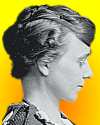
Died 5 Nov 1970 at age 75 (born 4 Mar 1895).
Margaret Dorothy Foster was an American chemist who, just three days after graduating, joined the U.S. Geological Survey in 1918 as their first female chemist. Her focus for years was analysis of natural waters: surface waters, hot springs and ground waters. She wrote papers on new methods for quantitative analysis of manganese, boron, sulphate and fluoride in water. Foster also studied the ground waters of the South Atlantic Coastal Plain and in the Houston-Galveston area in Texas. During WW II, she was recruited for the Manhattan Project, where she worked on new quantitative methods of analysis for uranium and for thorium. After the war, she turned her attention to the geochemistry of the platy minerals: clays, micas, chlorites and glauconites.«
Margaret Dorothy Foster was an American chemist who, just three days after graduating, joined the U.S. Geological Survey in 1918 as their first female chemist. Her focus for years was analysis of natural waters: surface waters, hot springs and ground waters. She wrote papers on new methods for quantitative analysis of manganese, boron, sulphate and fluoride in water. Foster also studied the ground waters of the South Atlantic Coastal Plain and in the Houston-Galveston area in Texas. During WW II, she was recruited for the Manhattan Project, where she worked on new quantitative methods of analysis for uranium and for thorium. After the war, she turned her attention to the geochemistry of the platy minerals: clays, micas, chlorites and glauconites.«
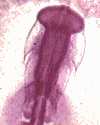
Died 5 Nov 1947 at age 77 (born 27 Jun 1870).
American zoologist and embryologist, known for his discoveries concerning the fertilization of the egg (ovum) and the role of hormones in sex determination. In 1914, Lillie hypothesized the existence of a substance, fertilizin, in the jelly coat of eggs which causes sperm cells to clump together. In 1916, he demonstrated the role of sex hormones in freemartinism. His embryological investigations reached into all aspects of cellular and embryonic development. He is best known for his dedicated efforts in shaping the Marine Biological Laboratory and the Oceanographic Institute at Woods Hole, Mass. He wrote The Development of the Chick (1908), a leading embryology text, and The Woods Hole Marine Biological Laboratory (1944).Image: 28-hour chick embryo.
American zoologist and embryologist, known for his discoveries concerning the fertilization of the egg (ovum) and the role of hormones in sex determination. In 1914, Lillie hypothesized the existence of a substance, fertilizin, in the jelly coat of eggs which causes sperm cells to clump together. In 1916, he demonstrated the role of sex hormones in freemartinism. His embryological investigations reached into all aspects of cellular and embryonic development. He is best known for his dedicated efforts in shaping the Marine Biological Laboratory and the Oceanographic Institute at Woods Hole, Mass. He wrote The Development of the Chick (1908), a leading embryology text, and The Woods Hole Marine Biological Laboratory (1944).Image: 28-hour chick embryo.
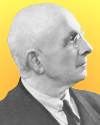
Died 5 Nov 1944 at age 71 (born 28 Jun 1873). quotes
French-American surgeon and biologist who received the 1912 Nobel Prize for Physiology or Medicine for developing a method of suturing blood vessels. He moved to the United States in 1905. As a member of the staff of the Rockefeller Institute, he did notable work on the problem of keeping tissue alive after removal from a living organism. The most famous example was a piece of tissue from the heart of a chicken embryo, which was kept alive from 1912 to 1946, at which time the experiment was deliberately ended. Techniques developed by Carrel have made possible the surgical transplantation of blood vessels and body organs.
French-American surgeon and biologist who received the 1912 Nobel Prize for Physiology or Medicine for developing a method of suturing blood vessels. He moved to the United States in 1905. As a member of the staff of the Rockefeller Institute, he did notable work on the problem of keeping tissue alive after removal from a living organism. The most famous example was a piece of tissue from the heart of a chicken embryo, which was kept alive from 1912 to 1946, at which time the experiment was deliberately ended. Techniques developed by Carrel have made possible the surgical transplantation of blood vessels and body organs.
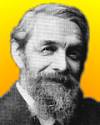
Died 5 Nov 1938 at age 66 (born 12 Apr 1872).
French chemist who first isolated lutetium, the last of the stable rare earths. Between 1895-1912 he worked on the rare earths and performed more than 200,000 fractional distillations in which he separated the elements samarium, europium, gadolinium, terbium, dysprosium and holmium. In 1907, he described a process by which Marignac's ytterbium (1879) could be separated into the two elements, ytterbium (neoytterbium) and lutetium. He named the new element after the Roman era village than stood on the site of Paris, his home town. (It was independently discovered by von Welsbach at about the same time.) Urbain also discovered the law of optimum phosphorescence of binary systems and wrote on isomorphism.
French chemist who first isolated lutetium, the last of the stable rare earths. Between 1895-1912 he worked on the rare earths and performed more than 200,000 fractional distillations in which he separated the elements samarium, europium, gadolinium, terbium, dysprosium and holmium. In 1907, he described a process by which Marignac's ytterbium (1879) could be separated into the two elements, ytterbium (neoytterbium) and lutetium. He named the new element after the Roman era village than stood on the site of Paris, his home town. (It was independently discovered by von Welsbach at about the same time.) Urbain also discovered the law of optimum phosphorescence of binary systems and wrote on isomorphism.
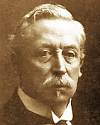
Died 5 Nov 1930 at age 72 (born 11 Aug 1858). quotes
Dutch scientist, physician, hygienist who demonstrated that beriberi is caused by poor diet led to the discovery of vitamins. He investigated beriberi (Sinhalese word for “extreme weakness”) in the Dutch East Indies in 1886. Because an attendant had been feeding his laboratory chickens with cooked white rice instead of whole rice, Eijkman discovered by accident that diet produced a disease resembling beriberi in human beings. Experimenting with a diet of polished rice, Eijkman reproduced these results (1897). He was the first to recognize that the human disease, too, was caused by lack of essential food factor (later shown to be thiamine, vitamin B1). For this work, he shared (with Sir Frederick Gowland Hopkins) the Nobel Prize in Physiology or Medicine in 1929.
Dutch scientist, physician, hygienist who demonstrated that beriberi is caused by poor diet led to the discovery of vitamins. He investigated beriberi (Sinhalese word for “extreme weakness”) in the Dutch East Indies in 1886. Because an attendant had been feeding his laboratory chickens with cooked white rice instead of whole rice, Eijkman discovered by accident that diet produced a disease resembling beriberi in human beings. Experimenting with a diet of polished rice, Eijkman reproduced these results (1897). He was the first to recognize that the human disease, too, was caused by lack of essential food factor (later shown to be thiamine, vitamin B1). For this work, he shared (with Sir Frederick Gowland Hopkins) the Nobel Prize in Physiology or Medicine in 1929.
Beriberi, White Rice And Vitamin B: A Disease, A Cause and A Cure, by Kenneth J. Carpenter. - book suggestion.
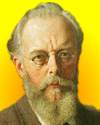
Died 5 Nov 1914 at age 80 (born 17 Jan 1834). quotes
August (Friedrich Leopold) Weismann was a German biologist and one of the founders of the science of genetics, who is best known for his opposition to the doctrine of the inheritance of acquired traits and for his "germ plasm" theory, the forerunner of DNA theory. Weismann conceived the idea, arising out of his early observations on the Hydrozoa, that the germ cells of animals contain "something essential for the species, something which must be carefully preserved and passed on from one generation to another." Weismann envisioned the hereditary substances from the two parents become mixed together in the fertilized egg and a form of nuclear division in which each daughter nucleus receives only half the original ancestral germ plasms.
August (Friedrich Leopold) Weismann was a German biologist and one of the founders of the science of genetics, who is best known for his opposition to the doctrine of the inheritance of acquired traits and for his "germ plasm" theory, the forerunner of DNA theory. Weismann conceived the idea, arising out of his early observations on the Hydrozoa, that the germ cells of animals contain "something essential for the species, something which must be carefully preserved and passed on from one generation to another." Weismann envisioned the hereditary substances from the two parents become mixed together in the fertilized egg and a form of nuclear division in which each daughter nucleus receives only half the original ancestral germ plasms.
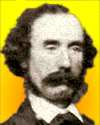
Died 5 Nov 1881 at age 71 (born 3 Jun 1810).
Irish seismologist and civil engineer who began his career in partnership with his father’s factory, and within a few years became involved in great engineering projects. His first such feat was to raise the 133 ton roof of St. George’s Church in Dublin. His interests included physical geology, and he wrote numerous papers on earthquakes from 1836 to 1879. Although others before him had attributed earthquakes to vibration during the passage of earth-waves, Mallet studied them with greater detail, using the approach of an exact science. He measured the velocity of the waves through the earth’s crust, compiled a catalog of recorded earthquakes, and presented a seismic map of the world. Since he coined the term, he can truly be called the first seismologist, and father of the science.« more
Irish seismologist and civil engineer who began his career in partnership with his father’s factory, and within a few years became involved in great engineering projects. His first such feat was to raise the 133 ton roof of St. George’s Church in Dublin. His interests included physical geology, and he wrote numerous papers on earthquakes from 1836 to 1879. Although others before him had attributed earthquakes to vibration during the passage of earth-waves, Mallet studied them with greater detail, using the approach of an exact science. He measured the velocity of the waves through the earth’s crust, compiled a catalog of recorded earthquakes, and presented a seismic map of the world. Since he coined the term, he can truly be called the first seismologist, and father of the science.« more
The Founders of Seismology, by Charles Davison. - book suggestion.
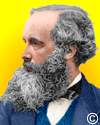
Died 5 Nov 1879 at age 48 (born 13 Jun 1831). quotes
Scottish physicist and mathematician. Maxwell's researches united electricity and magnetism into the concept of the electro-magnetic field. In London, around 1862, Maxwell calculated that the speed of propagation of an electromagnetic field is approximately that of the speed of light. He proposed that the phenomenon of light is therefore an electromagnetic phenomenon. The four partial differential equations, now known as Maxwell's equations, first appeared in fully developed form in Electricity and Magnetism (1873). He died relatively young; some of the theories he advanced in physics were only conclusively proved long after his death. Maxwell's ideas also paved the way for Einstein's special theory of relativity and the quantum theory.
Scottish physicist and mathematician. Maxwell's researches united electricity and magnetism into the concept of the electro-magnetic field. In London, around 1862, Maxwell calculated that the speed of propagation of an electromagnetic field is approximately that of the speed of light. He proposed that the phenomenon of light is therefore an electromagnetic phenomenon. The four partial differential equations, now known as Maxwell's equations, first appeared in fully developed form in Electricity and Magnetism (1873). He died relatively young; some of the theories he advanced in physics were only conclusively proved long after his death. Maxwell's ideas also paved the way for Einstein's special theory of relativity and the quantum theory.
The Man Who Changed Everything: The Life of James Clerk Maxwell, by Basil Mahon. - book suggestion.
Died 5 Nov 1857 (born 1785). quotes
English chemist who discovered acetylene gas. He gained experience while assisting his cousin, Humphry Davy in his chemical researches at the Royal Institution. From 1813, he pursued a career as a professor of chemistry in Ireland. Edmund Davy was the first to discover a finely divided, spongy platinum with remarkable gas-absorptive and catalytic properties. In 1836, by heating potassium carbonate with carbon at very high temperatures, he produced a residue of what is now known as potassium carbide, (K2C2), which reacted with water to release a new gas he recognised as a “new carburet of hydrogen.” In 1860, during a thorough investigation of hydrocarbons, Marcellin Berthelot rediscovered the gas and coined its name “acetylene”« more
English chemist who discovered acetylene gas. He gained experience while assisting his cousin, Humphry Davy in his chemical researches at the Royal Institution. From 1813, he pursued a career as a professor of chemistry in Ireland. Edmund Davy was the first to discover a finely divided, spongy platinum with remarkable gas-absorptive and catalytic properties. In 1836, by heating potassium carbonate with carbon at very high temperatures, he produced a residue of what is now known as potassium carbide, (K2C2), which reacted with water to release a new gas he recognised as a “new carburet of hydrogen.” In 1860, during a thorough investigation of hydrocarbons, Marcellin Berthelot rediscovered the gas and coined its name “acetylene”« more
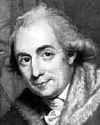
Died 5 Nov 1800 at age 65 (born 6 Oct 1735).
British pioneer in the design of precision tools. At 23, Ramsden chose to apprentice to a maker of mathematical instruments. By age 27 he had his own business in London and was known as the most skilful designer of mathematical, astronomical, surveying and navigationalinstruments in the 18th Century. He is best known for the design of a telescope and microscope eyepiece (ocular) still commonly used today and bearing his name. The French scientist N. Cassegrain proposed a design of a reflecting telescope in 1672. It was Ramsden, however, 100 years later, who found that this design reduces blurring of the image caused by the sphericity of the lenses or mirrors. He also built lathes, barometers, manometers and assay balances.
British pioneer in the design of precision tools. At 23, Ramsden chose to apprentice to a maker of mathematical instruments. By age 27 he had his own business in London and was known as the most skilful designer of mathematical, astronomical, surveying and navigationalinstruments in the 18th Century. He is best known for the design of a telescope and microscope eyepiece (ocular) still commonly used today and bearing his name. The French scientist N. Cassegrain proposed a design of a reflecting telescope in 1672. It was Ramsden, however, 100 years later, who found that this design reduces blurring of the image caused by the sphericity of the lenses or mirrors. He also built lathes, barometers, manometers and assay balances.
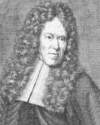
Died 5 Nov 1714 at age 81 (born 3 Nov 1633). quotes
Italian physician, born in Capri, Italy, who first recorded relationships between occupational environment and workers' illnesses and is considered a founder of occupational medicine. Educated in philosophy and medicine, he developed his interest in workers' health while a student. He introduced the diagnostic tool of asking a patient his occupation, and classified occupational health hazards accord to causes (noxious vapors, very fine particles, heat, cold, humidity, irregular physical motions, etc). He addressed issues of ventilation and recommended such protections as face masks. He compiled the first systematic treatise on occupational diseases, De Morbis Artificum Diatriba (1700). He taught at the University of Padua until his death in 1714.
Italian physician, born in Capri, Italy, who first recorded relationships between occupational environment and workers' illnesses and is considered a founder of occupational medicine. Educated in philosophy and medicine, he developed his interest in workers' health while a student. He introduced the diagnostic tool of asking a patient his occupation, and classified occupational health hazards accord to causes (noxious vapors, very fine particles, heat, cold, humidity, irregular physical motions, etc). He addressed issues of ventilation and recommended such protections as face masks. He compiled the first systematic treatise on occupational diseases, De Morbis Artificum Diatriba (1700). He taught at the University of Padua until his death in 1714.
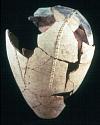
Wine jar
In 1992, the discovery chemical evidence of 5000-year-old beer found at Godin Tepe in the Zagros mountains of Iran was reported in the journal Nature. Beer was the preferred fermented beverage of the ancient Sumerians. Chemical evidence was found from an organic residue inside a pottery vessel that had apparently been used for beer fermentation or storage. Some grooves were found inside the double-handled jar which contained a pale yellowish residue that gave a positive test for oxalate ion. Calcium oxalate, only slightly water-soluble is a principal component of sediment that settles from barley beer. In 1991, evidence for the earliest grape wine of had been found in the same area, and to be of similar age, about 3500 - 3100 BC.[Image: Wine jar about 3000 BC from Godin Tepe]
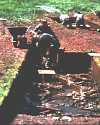
In 1963, archaeologists found Viking ruins in Newfoundland predating Columbus by 500 years. Leif Ericson, Icelandic explorer, second son of Eric the Red, is believed by most historians to have been the first European to reach the North American mainland. About the year 1000 he landed at a place that he called Vinland. Vinland was identified as Newfoundland in 1963 when archaeologists uncovered the remains of a Viking-type settlement at L'Anse-aux-Meadows at the extreme northern tip of the island. His countryman, Bjarni Herjólfsson, had earlier sighted North America and reported that the land was rich in timber. Thus, Ericson had a clear economic motive for his journey. Icelanders needed wood for houses and ships, but their country is entirely treeless.
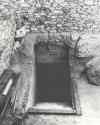
In 1922, Howard Carter excavated a further 11 steps and exposed a large part of a plastered and sealed doorway to Tutankhamun's tomb in the Valley of the Kings near Luxor, Egypt. (The first step had been discovered by a labourer the previous day). At the time, Carter recognized seal-impressions suggesting that the tomb belonged to somebody of high standing but did not yet know that it was occupied by Tutankhamun. Carter cabled to Lord Carnarvon (then in England) the following message: "At last have made wonderful discovery in Valley a magnificent tomb with seals intact recovered same for your arrival congratulations." The tomb entrance was refilled, to be uncovered fully on 23-24 Nov 1922, after the arrival of Lord Carnarvon.
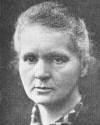
In 1906, at 1:30 pm, Marie Curie gave her inaugural lecture as the first woman lecturer at the Sorbonne. She explained the theory of ions in gases and her treatise on radioactivity to120 students, public and press. It wasn this same day, fifteen years earlier, 5 Nov 1891 that she first enrolled at the Sorbonne. Following the accidental death of her husband, Pierre Curie, she had been invited to occupy the Physics chair at the Sorbonne that he had held. Madame Curie, by now a Nobel prize winner and authority on radioactivity, continued the work she started with her husband.
Madame Curie: A Biography, by Eve Curie. - book suggestion.
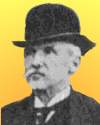
In 1895, George B. Selden of Rochester, New York, received the first U.S. patent for a gasoline-driven automobile. In the patent, which he had filed several years earlier, on 8 May 1879, he described not only the engine but also a complete automobile incorporating such features as a clutch, compressed air self-starter, and steering system (No. 549,160). Seldon maintained that it was the combination of these elements, together with his engine, made the road-engine patentable. As a patent attorney, he knew to delay the issue of the patent by sending ammendments and other communications every two years. Meanwhile, others did the hard work of developing the automobile, and his patent became more valuable. Years of legal wrangling for profits followed.

In 1891, Marie Curie enrolled in the Sorbonne, two days before her 24th birthday. She has been out of school for 5 years, is now in a foreign country (France instead of her homeland of Poland), has barely enough money to survive, and even faints from hunger on at least one occasion in the classroom. Yet she eventually graduated at the top of her class. Then on this same day in 5 Nov 1906, she delivered her first lecture at the Sorbonne as the first female physics teacher in the school's history.
Madame Curie: A Biography, by Eve Curie. - book suggestion.
In 1852, the American Society of Civil Engineers and Architects was founded and was the first U.S. national civil engineering society. James Laurie was the first president, and the first secretary was Robert Bennett Gorsuch. The name was shortened later to the American Society of Civil Engineers. The purpose of the society was "the advancement of the sciences of engineering and architecture in their several branches, the professional improvement of its members, the encouragement of intercourse between men of practical science, and the establishment of a central point of reference and union for its members."
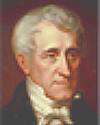
In 1824, the Renssalaer School was founded in Troy, N.Y., by Stephen van Renssalaer becoming the first engineering college in the U.S. It opened on 3 Jan 1825, with the purpose of instructing persons, who may choose to apply themselves, in the application of science to the common purposes of life." The first class of 10 students graduated on 26 Apr 1826. The first director and senior professor was Amos Eaton who served from Nov 1824 - 10 May 1842. The name of Renssalaer Institute was adopted on 26 Apr 1832, and Renssalaer Polytechnic Institute on 8 Apr 1861.[Image: Stephen van Renssalaer.]
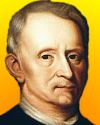
In 1662, Robert Hooke was appointed Curator of Experiments to the Royal Society, London. The position was established as a provision of the Royal Charter given by King Charles II (passed by the Great Seal on 15 July 1662) to incorporate the Royal Society. The Society was the successor of the Society for the Promoting of Physico-Mathematical Experimental Learning formed by at a meeting of a dozen scientist on 28 Nov 1660 at Gresham College. Hooke was required to demonstrate three or four experiments at every meeting of the Society, starting without recompense until 1664 when the Society was in a position to do so. Hooke's genius produced a wealth of original ideas over the following 15 years.«[Image: from a recently discovered portrait believed (by Lisa Jardine) to be the only authentic picture of Hooke] more
The Curious Life of Robert Hooke: The Man Who Measured London, by Lisa Jardine. - book suggestion.




